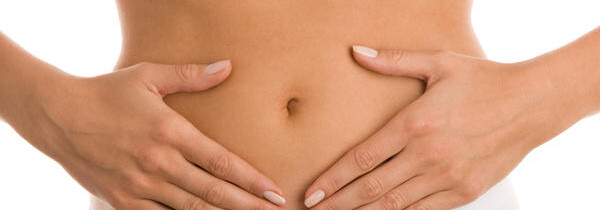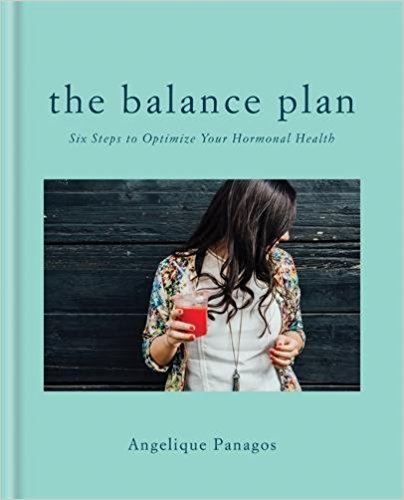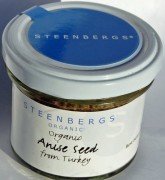Endometriosis under the magnifying glass
We’ve all heard the saying ‘happy wife, happy life’, well I think it should be ‘happy hormones, happy life!
Having a host of hormonal conditions myself has led me to specialise in hormonal health. You can read more about these experiences within my personal story post.
Meanwhile, I can totally relate to dreading your monthly cycle because of the mood changes and excruciating pain. I clearly remember having to go home from school and work because the menstruation cramps were so severe that I was doubled over with pain, and vomiting – not a great visual!
A lot of the time women think this is normal; their lot in life. Well I am here to tell you it’s not, and there are strategies and lifestyle changes that can be made to help alleviate the symptoms and balance your hormones.
After all, we should welcome our monthly menstruation – it’s a natural cleansing time and a sign you are a functioning woman.
Let’s take a closer look at Endometriosis
Pronounced: en-dō-mē-trē-Ō-sis
Endo = within; metri = uterus; osis = condition
Endometriosis is thought to be one of the most common gynaecological disorders affecting women today. Up to 15% of all menstruating women may be affected, and as many as half of these may become infertile.
The condition is characterised by growth of endometrial tissue – normally only found in the inner lining of the uterus (womb) – occurring outside the uterus. While many theoretical mechanisms exist to explain the cause of endometriosis, in reality the true cause remains unknown.
Ectopic endometrial growths most commonly develop around the ovaries, fallopian tubes, bowel, bladder, vagina and rectum. Less commonly, they have been known to migrate as far afield as the lungs, heart, eyes and nasal cavity.
As with normal endometrium, ectopic endometrial tissue responds to the hormonal fluctuations associated with the menstrual cycle. So, with each cycle, the ectopic tissue also proliferates and thickens, before finally breaking down and bleeding.
However, with there being no outlet for the bleed, the blood becomes trapped, irritating local tissue and causing pain and inflammation.
Symptoms
Symptoms of endometriosis vary considerably. While many women experience no problems at all, for others symptoms literally take over their lives.
Key symptoms include:
- Painful menstruation and intercourse
- Infertility or difficulty conceiving
Other symptoms include:
- Heavy and/or irregular periods
- Bleeding between periods
- Cyclical pain in the pelvic region
- Lower back pain, sometimes radiating down the legs
- Discomfort during urination and/or bowel movements
- Bleeding from nose, bladder and/or bowels
- Coughing
- Gastrointestinal disorders, including constipation, diarrhoea, bloating, abdominal cramp and nausea
- Fainting, lethargy and extreme tiredness
Symptoms may or may not be persistent throughout the menstrual cycle, with severity often increasing 5 to 7 days before a period, over 2 to 3 days during the period itself or during ovulation. Symptoms may also progressively worsen over a period of several months.
Your diagnosis
Endometriosis manifests in so many different ways that misdiagnosis is a common problem. Although blood tests can detect positive results, they cannot differentiate between other gynaecological disorders.
Ultrasound is a useful tool as a first screening to identify the presence of cysts and adhesions.
For a definitive diagnosis to be made, an abdominal laparoscopy (using a fibre optic viewing tube) and biopsy need to be carried out under general anaesthetic. This is most useful when performed just before the period when the ectopic tissue is at its most active.
Conventional Treatment
There is no known outright cure for endometriosis so conventional treatment is based around easing the symptoms; shrinking or slowing down the ectopic endometrial growth, preventing or delaying recurrence and where possible preserving or restoring fertility. This is achieved through a combination of treatment focused on anti-inflammatory pain relief, hormone treatment or surgery.
These treatments may offer initial relief of endometriosis, but all too often symptoms recur over time. This is possibly due to difficulty in removing all traces of ectopic tissue but also because causative nutritional/lifestyle factors are often overlooked.
Therapeutic Treatment Strategies
High levels of inflammation and oestrogen activity are associated with endometriosis and these are easily aggravated by common dietary and lifestyle factors associated with today’s fast paced lifestyle.
Nutritional protocols in the treatment of endometriosis are designed to help break or reduce this cycle of inflammation and oestrogen activity that exacerbates ectopic endometrial tissue, helping to alleviate symptoms and potentially inhibit the growth and proliferation of ectopic tissue.
6 STEPS TO RESTORING THE BALANCE!
1. Balance your blood sugar and help achieve or maintain an ideal body weight
Sugar and refined foods cause disruption to blood sugar levels. The hormone insulin that regulates blood sugar levels is a potent stimulator of the enzyme that produces oestrogen.
Energy dense diets and low activity levels increase levels of adipose (fat) tissue which is a potent stimulator of inflammatory and oestrogen activity.
2. Reduce your exposure to environmental toxins
Environmental toxins and dioxins disrupt hormone activity in the body by mimicking oestrogen.
3. Support elimination of excess oestrogens from the body
Low fibre, high sugar and stimulants disrupt the balance of gut flora, reduce efficiency of liver detoxification and bowel elimination (all important for the safe elimination of excess oestrogen). In short you need to poo!
4. Adopt an anti-inflammatory lifestyle
High dairy and red meat intake contain high levels of arachidonic acid, which has pro-inflammatory properties and stimulates the enzymes that produce oestrogen. Nutrient poor diets low in essential fats and high in saturates can affect the availability and metabolism of essential fats that contain key anti-inflammatory properties. We live in a world were gluten is everywhere; gluten can lead to increased inflammation as well.
5. Help balance hormones
Excess oestrogen is a contributory factor in endometriosis.
6. Increase activity levels
To improve circulation to your pelvic region, which may help alleviate period pains, aid weight management, reduce stress, release feel-good endorphins and help improve your energy and self-esteem!
If you have endometriosis or a hormonal imbalance and would like to work together on feeling better – and welcoming your monthly menses! – please get in touch.
Nourishing well wishes,
Angelique
Consult your doctor or health care practitioner for any health problems, and before embarking on any new health regimes, using any supplements or before making any changes in prescribed medications or food programmes.














I was finally diagnosed with endometriosis in June this year after a laparoscopy to explore the cause of my pain. The surgeon separated my bowel from my appendix scar and burnt away any endo he could see. Unfortunately I’m still suffering, so I’m now having Zoladex injections to stop my cycle and Livial to stop the side effects, this is for six months. It’s intesting to hear about red meat and diary. I have found bread effects me so I’ve cut that down and I’ve reduced my sugar in my diet too. Thank you for this post.
Hello Lucy, I am so sorry to hear you have been going through all of this! At least now you know what it is causing the pain and total discomfort so that you can take the right steps to work at alleviating it.
There is a strong link between gluten and Endo so try avoiding it for a few weeks and see if that helps at all. Have a look at my gluten-free blog for some tips. Cutting out sugar and refined foods would be advisable too, loads of blog to explore this too. Please let me know how you are getting on and if you want to see me for a consultation do get in touch. Hope you feel better soon, Angelique